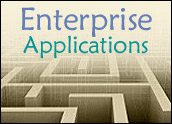
Talisma has introduced version 8.1 of its Knowledgebase application.
The point release represents a significant shift in the company’s approach to enterprise search, Bob Perry, director of Knowledgebase product management, told CRM Buyer.
Better Search
In this upgrade, Talisma has OEM‘ed the Autonomy search engine, replacing its previous methodology of performing a statistical analysis of how often words appear.
“We chose Autonomy for a couple of reasons,” Perry said, “but mainly because it is consistently the leader in search technology for enterprise search.”
Talisma’s new search offering is based on enhanced natural language query functionality that is able to relate content in a more automated fashion, Perry explained.
The application has both federated and progressive search features, he added.
The progressive search functionality allows users to refine a query. “A lot of times a person does not know exactly what he or she is searching for, and needs to continually tweak the query,” said Perry.
Other new search features:
- Concept-matching, which ranks search results by relevance to the user’s query;
- Automatic Summarization, which builds and displays summaries for each document returned;
- Auto Recommend, which automatically builds hyperlinks between related documents based on content, eliminating manual linking and maintenance; and
- Direct Link Search Results, a feature that takes users to the relevant section of a document.
Having advanced search functionality has become essential for knowledge base management providers, John Ragsdale, vice president of technology research for the Service and Support Professionals Assocation, told CRM Buyer. “This is becoming a real pain point for large companies today, with a decade or more of content in legacy knowledge bases, new information from ‘best of breed’ knowledge bases, and now exploding libraries of customer-created content in discussion forums.”
Having a federated search tool that can scan all available content sources is critical, he added.
At the same time, though, “concept” analysis is an emerging technology that holds the promise to vastly improve the accuracy of self-service, Ragsdale continued.
“Older search tools use text-matching, so customers who use different terminology than the company standard may never find a solution in the knowledge base. Concept analysis understands what customers, or agents, are searching for at a concept level, regardless of wording, terminology or spelling,” he explained.
50 Features
The new search engine is part of a wider offering of some 50 new features that range from content management to Web 2.0 collaboration functionality.
Version 8.1 of the Talisma Knowledgebase also has enhanced Versioning, Base and Derived Articles for improved multi-language content management, Perry said.
The enhancements in Base and Derived Articles allow users to track relationships between articles more effectively, which is particularly useful when there is multilingual content, he pointed out.
“Previously, one had to manually track the process to link English versions to, for example, German and French versions,” Perry noted.
Content management has been another focus in this release, with changes in both Versioning and workflow notification. Upgrades enable users to track a more complete audit trail and give them more control over the content life cycle, Perry explained, such as identifying who needs to do what and when in maintaining the content.
nGenera Changes
Although Talisma is now an nGenera company, there hasn’t been enough time since the acquisition to include in version 8.1 any of the Web 2.0 functionalities that are nGenera’s specialties.
However, the road map for product integration is only weeks away, according to Perry. “I can tell you that it will be very weighted in Web 2.0 functionality.”
Future versions of this application will continue to leverage Autonomy with personalization and profiling features that will deliver content to users through forums or items that they have tagged, he said.
Talisma Knowledgebase 8.1 can be purchased as part of the Talisma Customer Interaction Management suite or on its own. It can also be deployed on premise or in a Software as a Service environment.
























































